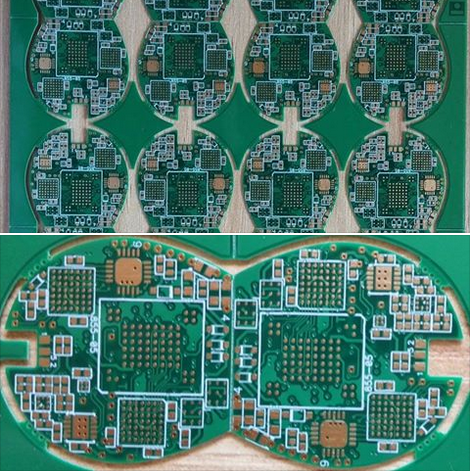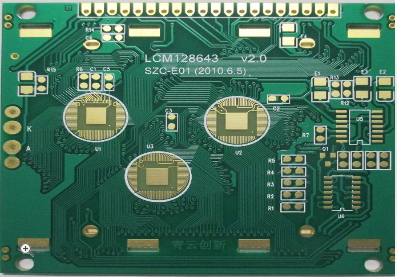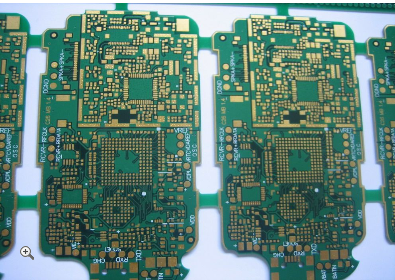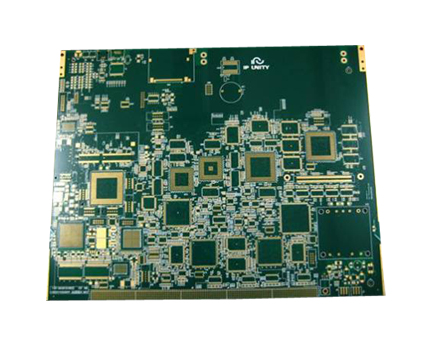-
 Agriculture
Agriculture
-
 Health-Care
Health-Care
-
 Environment
Environment
-
 Construction-Real-Estate
Construction-Real-Estate
-
 Tools-Hardware
Tools-Hardware
-
 Home-Garden
Home-Garden
-
 Furniture
Furniture
-
 Luggage-Bags-Cases
Luggage-Bags-Cases
-
 Medical-devices-Supplies
Medical-devices-Supplies
-
 Gifts-Crafts
Gifts-Crafts
-
 Sports-Entertainment
Sports-Entertainment
-
 Food-Beverage
Food-Beverage
-
 Vehicles-Transportation
Vehicles-Transportation
-
 Power-Transmission
Power-Transmission
-
 Material-Handling
Material-Handling
-
 Renewable-Energy
Renewable-Energy
-
 Safety
Safety
-
 Testing-Instrument-Equipment
Testing-Instrument-Equipment
-
 Construction-Building-Machinery
Construction-Building-Machinery
-
 Pet-Supplies
Pet-Supplies
-
 Personal-Care-Household-Cleaning
Personal-Care-Household-Cleaning
-
 Vehicle-Accessories-Electronics-Tools
Vehicle-Accessories-Electronics-Tools
-
 School-Office-Supplies
School-Office-Supplies
-
 Packaging-Printing
Packaging-Printing
-
 Mother-Kids-Toys
Mother-Kids-Toys
-
 Business-Services
Business-Services
-
 Commercial-Equipment-Machinery
Commercial-Equipment-Machinery
-
 Apparel-Accessories
Apparel-Accessories
-
 Security
Security
-
 Shoes-Accessories
Shoes-Accessories
-
 Vehicle-Parts-Accessories
Vehicle-Parts-Accessories
-
 Jewelry-Eyewear-Watches-Accessories
Jewelry-Eyewear-Watches-Accessories
-
 Lights-Lighting
Lights-Lighting
-
 Fabric-Textile-Raw-Material
Fabric-Textile-Raw-Material
-
 Fabrication-Services
Fabrication-Services
-
 Industrial-Machinery
Industrial-Machinery
-
 Consumer-Electronics
Consumer-Electronics
-
 Electrical-Equipment-Supplies
Electrical-Equipment-Supplies
-
 Electronic-Components-Accessories-Telecommunications
Electronic-Components-Accessories-Telecommunications
-
 Home-Appliances
Home-Appliances
-
 Beauty
Beauty
-
 Chemicals
Chemicals
-
 Rubber-Plastics
Rubber-Plastics
-
 Metals-Alloys
Metals-Alloys
- Masonry Materials
- Curtain Walls & Accessories
- Earthwork Products
- Fireproofing Materials
- Heat Insulation Materials
- Plastic Building Materials
- Building Boards
- Soundproofing Materials
- Timber
- Waterproofing Materials
- Balustrades & Handrails
- Bathroom & Kitchen
- Flooring & Accessories
- Tiles & Accessories
- Door, Window & Accessories
- Fireplaces & Stoves
- Floor Heating Systems & Parts
- Stairs & Stair Parts
- Ceilings
- Elevators & Escalators
- Stone
- Countertops, Vanity Tops & Table Tops
- Mosaics
- Metal Building Materials
- Multifunctional Materials
- Ladders & Scaffoldings
- Mouldings
- Corner Guards
- Decorative Films
- Formwork
- Building & Industrial Glass
- Other Construction & Real Estate
- Wallpapers/Wall panels
- HVAC System & Parts
- Outdoor Facilities
- Prefabricated Buildings
- Festive & Party Supplies
- Bathroom Products
- Household Sundries
- Rain Gear
- Garden Supplies
- Household Cleaning Tools & Accessories
- Lighters & Smoking Accessories
- Home Storage & Organization
- Household Scales
- Smart Home Improvement
- Home Textiles
- Kitchenware
- Drinkware & Accessories
- Dinnerware, Coffee & Wine
- Home Decor
- Golf
- Fitness & Body Building
- Amusement Park Facilities
- Billiards, Board Game,Coin Operated Games
- Musical Instruments
- Outdoor Affordable Luxury Sports
- Camping & Hiking
- Fishing
- Sports Safety&Rehabilitation
- Ball Sports Equipments
- Water Sports
- Winter Sports
- Luxury Travel Equipments
- Sports Shoes, Bags & Accessories
- Cycling
- Other Sports & Entertainment Products
- Artificial Grass&Sports Flooring&Sports Court Equipment
- Scooters
- Food Ingredients
- Honey & Honey Products
- Snacks
- Nuts & Kernels
- Seafood
- Plant & Animal Oil
- Beverages
- Fruit & Vegetable Products
- Frog & Escargot
- Bean Products
- Egg Products
- Dairy Products
- Seasonings & Condiments
- Canned Food
- Instant Food
- Baked Goods
- Other Food & Beverage
- Meat & Poultry
- Confectionery
- Grain Products
- Feminie Care
- Hair Care & Styling
- Body Care
- Hands & Feet Care
- Hygiene Products
- Men's Grooming
- Laundry Cleaning Supplies
- Travel Size & Gift Sets
- Room Deodorizers
- Other Personal Care Products
- Pest Control Products
- Special Household Cleaning
- Floor Cleaning
- Kitchen & Bathroom Cleaning
- Oral Care
- Bath Supplies
- Yellow Pages
- Correction Supplies
- Office Binding Supplies
- Office Cutting Supplies
- Board Erasers
- Office Adhesives & Tapes
- Education Supplies
- Pencil Cases & Bags
- Notebooks & Writing Pads
- File Folder Accessories
- Calendars
- Writing Accessories
- Commercial Office Supplies
- Pencil Sharpeners
- Pens
- Letter Pad/Paper
- Paper Envelopes
- Desk Organizers
- Pencils
- Markers & Highlighters
- Filing Products
- Art Supplies
- Easels
- Badge Holder & Accessories
- Office Paper
- Printer Supplies
- Book Covers
- Other Office & School Supplies
- Stationery Set
- Boards
- Clipboards
- Stamps
- Drafting Supplies
- Stencils
- Electronic Dictionary
- Books
- Map
- Magazines
- Calculators
- Baby & Toddler Toys
- Educational Toys
- Classic Toys
- Dress Up & Pretend Play
- Toy Vehicle
- Stuffed Animals & Plush Toys
- Outdoor Toys & Structures
- Balloons & Accessories
- Baby Food
- Children's Clothing
- Baby Supplies & Products
- Maternity Clothes
- Kids Shoes
- Baby Care
- Novelty & Gag Toys
- Dolls & Accessories
- Puzzle & Games
- Blocks & Model Building Toys
- Toddler Clothing
- Baby Clothing
- Kids' Luggage & Bags
- Arts, Crafts & DIY Toys
- Action & Toy Figures
- Baby Appliances
- Hobbies & Models
- Remote Control Toys
- Promotional Toys
- Pregnancy & Maternity
- Hygiene Products
- Kid's Textile&Bedding
- Novelty & Special Use
- Toy Weapons
- Baby Gifts
- Baby Storage & Organization
- Auto Drive Systems
- ATV/UTV Parts & Accessories
- Marine Parts & Accessories
- Other Auto Parts
- Trailer Parts & Accessories
- Auto Transmission Systems
- Train Parts & Accessories
- Universal Parts
- Railway Parts & Accessories
- Auto Brake Systems
- Aviation Parts & Accessories
- Truck Parts & Accessories
- Auto Suspension Systems
- Auto Lighting Systems
- New Energy Vehicle Parts & Accessories
- Auto Steering Systems
- Wheels, Tires & Accessories
- Bus Parts & Accessories
- Auto Performance Parts
- Cooling System
- Go-Kart & Kart Racer Parts & Accessories
- Air Conditioning Systems
- Heavy Duty Vehicle Parts & Accessories
- Auto Electrical Systems
- Auto Body Systems
- Auto Engine Systems
- Container Parts & Accessories
- Motorcycle Parts & Accessories
- Refrigeration & Heat Exchange Equipment
- Machine Tool Equipment
- Food & Beverage Machinery
- Agricultural Machinery & Equipment
- Apparel & Textile Machinery
- Chemical Machinery
- Packaging Machines
- Paper Production Machinery
- Plastic & Rubber Processing Machinery
- Industrial Robots
- Electronic Products Machinery
- Metal & Metallurgy Machinery
- Woodworking Machinery
- Home Product Manufacturing Machinery
- Machinery Accessories
- Environmental Machinery
- Machinery Service
- Electrical Equipment Manufacturing Machinery
- Industrial Compressors & Parts
- Tobacco & Cigarette Machinery
- Production Line
- Used Industrial Machinery
- Electronics Production Machinery
- Other Machinery & Industrial Equipment
- Camera, Photo & Accessories
- Portable Audio, Video & Accessories
- Television, Home Audio, Video & Accessories
- Video Games & Accessories
- Mobile Phone & Accessories
- Electronic Publications
- Earphone & Headphone & Accessories
- Speakers & Accessories
- Smart Electronics
- TV Receivers & Accessories
- Mobile Phone & Computer Repair Parts
- Chargers, Batteries & Power Supplies
- Used Electronics
- VR, AR, MR Hardware & Software
- Projectors & Presentation Equipments
- Other Consumer Electronics
- Cables & Commonly Used Accessories
- Computer Hardware & Software
- Displays, Signage and Optoelectronics
- Discrete Semiconductors
- Wireless & IoT Module and Products
- Telecommunications
- Connectors, Terminals & Accessories
- Development Boards, Electronic Modules and Kits
- Circuit Protection
- Sensors
- Isolators
- Audio Components and Products
- Integrated Circuits
- Power Supplies
- Relays
- RF, Microwave and RFID
- Electronic Accessories & Supplies
- Passive Components
- PCB & PCBA
- Air Quality Appliances
- Home Appliance Parts
- Heating & Cooling Appliances
- Small Kitchen Appliances
- Laundry Appliances
- Water Heaters
- Water Treatment Appliances
- Refrigerators & Freezers
- Personal Care & Beauty Appliances
- Major Kitchen Appliances
- Cleaning Appliances
- Second-hand Appliances
- Smart Home Appliances
- Other Home Appliances
- Energy Chemicals
- Inorganic Chemicals
- Basic Organic Chemicals
- Agrochemicals
- Admixture & Additives
- Catalysts & Chemical Auxiliary Agents
- Pigments & Dyestuff
- Coating & Paint
- Daily Chemicals
- Polymer
- Organic Intermediate
- Adhesives & Sealants
- Chemical Waste
- Biological Chemical Products
- Surface Treatment Chemicals
- Painting & Coating
- Chemical Reagents
- Flavor & Fragrance
- Non-Explosive Demolition Agents
- Other Chemicals
- Custom Chemical Services
Next Generation Aerospace PCBs With Superior Performance
In the rapidly evolving world of aerospace technology, the demand for more reliable, efficient, and high-performance printed circuit boards (PCBs) has never been greater. Next-generation aerospace PCBs are at the forefront of innovation, designed to meet the stringent requirements of modern aircraft, satellites, and space exploration missions. These advanced PCBs not only enhance the functionality and safety of aerospace systems but also contribute to reducing weight and improving energy efficiency, which are critical factors in aerospace design. As the industry pushes the boundaries of what is possible, understanding the key features and benefits of these superior PCBs becomes essential for engineers, designers, and stakeholders alike.
The development of next-generation aerospace PCBs is driven by the need for higher reliability in extreme environments, such as those encountered in space or during high-altitude flights. Traditional PCBs often fall short in terms of durability and performance under such conditions, leading to increased interest in materials and technologies that can withstand temperature fluctuations, radiation, and mechanical stress. This article delves into the various aspects that make these PCBs superior, from advanced materials and manufacturing techniques to their applications and future trends, providing a comprehensive overview for those interested in the cutting edge of aerospace electronics.
Advanced Materials and Construction
One of the defining characteristics of next-generation aerospace PCBs is the use of advanced materials that offer superior thermal stability, mechanical strength, and electrical performance. Materials such as polyimide, ceramic substrates, and low-loss laminates are increasingly employed to ensure that the PCBs can operate reliably in the harsh conditions typical of aerospace environments. These materials provide excellent resistance to high temperatures, which is crucial for applications where components may be exposed to extreme heat during operation or re-entry into the atmosphere.
Furthermore, the construction of these PCBs often involves multilayer designs with high-density interconnects (HDI), allowing for more components to be packed into a smaller space without compromising performance. This not only reduces the overall weight of the aerospace system—a critical factor for fuel efficiency and payload capacity—but also enhances signal integrity and reduces electromagnetic interference (EMI). The integration of embedded components, such as resistors and capacitors within the PCB layers, further contributes to miniaturization and improved reliability, making these boards ideal for advanced avionics and communication systems.
Enhanced Reliability and Durability
Reliability is paramount in aerospace applications, where failure can have catastrophic consequences. Next-generation PCBs are designed with rigorous testing and quality control measures to ensure they meet industry standards such as IPC-6012DS and MIL-PRF-31032. These standards mandate strict requirements for thermal cycling, vibration resistance, and resistance to environmental factors like moisture and chemicals. By adhering to these guidelines, manufacturers can produce PCBs that maintain performance over long periods, even in the most demanding conditions.
In addition to compliance with standards, these PCBs often incorporate features such as conformal coating and advanced soldering techniques to protect against corrosion and mechanical stress. The use of gold or other noble metals for plating contacts and traces further enhances durability by preventing oxidation and ensuring stable electrical connections. This focus on longevity and robustness not only extends the lifespan of aerospace systems but also reduces maintenance costs and downtime, contributing to overall operational efficiency and safety.
Applications in Modern Aerospace Systems
The superior performance of next-generation aerospace PCBs enables their use in a wide range of critical applications, from flight control systems and navigation equipment to communication satellites and unmanned aerial vehicles (UAVs). In aircraft, these PCBs are integral to avionics suites that manage everything from engine control to in-flight entertainment, providing the computational power and reliability needed for safe and efficient operation. Their ability to handle high-frequency signals makes them ideal for radar and telemetry systems, which are essential for monitoring and communicating with aircraft and spacecraft.
In space exploration, these PCBs are deployed in satellites, rovers, and spacecraft where they must endure the vacuum of space, radiation exposure, and extreme temperature variations. For instance, in Mars rovers or lunar landers, the PCBs facilitate data processing, imaging, and communication with Earth, all while operating reliably for years without maintenance. The advancements in PCB technology also support the growing trend of electrification and automation in aerospace, including electric propulsion systems and autonomous flight controls, paving the way for more sustainable and innovative aerospace solutions in the future.
Future Trends and Innovations
Looking ahead, the evolution of aerospace PCBs is likely to be influenced by emerging technologies such as additive manufacturing (3D printing) and the integration of artificial intelligence (AI) for predictive maintenance and optimization. Additive manufacturing allows for the creation of complex, lightweight structures that were previously impossible with traditional methods, potentially revolutionizing PCB design and production. This could lead to even greater reductions in weight and improvements in performance, aligning with the aerospace industry's goals of sustainability and efficiency.
Moreover, the incorporation of IoT (Internet of Things) capabilities and smart sensors into PCBs will enable real-time monitoring of system health and environmental conditions, enhancing safety and reliability. As aerospace systems become more interconnected and autonomous, the role of next-generation PCBs will only grow in importance, driving further innovation in materials, design, and manufacturing processes. These trends promise to unlock new possibilities in aerospace technology, from faster commercial air travel to more ambitious space missions, solidifying the critical role of superior-performance PCBs in shaping the future of flight and exploration.
REPORT































































































































































































































































































































































































































































































































































































